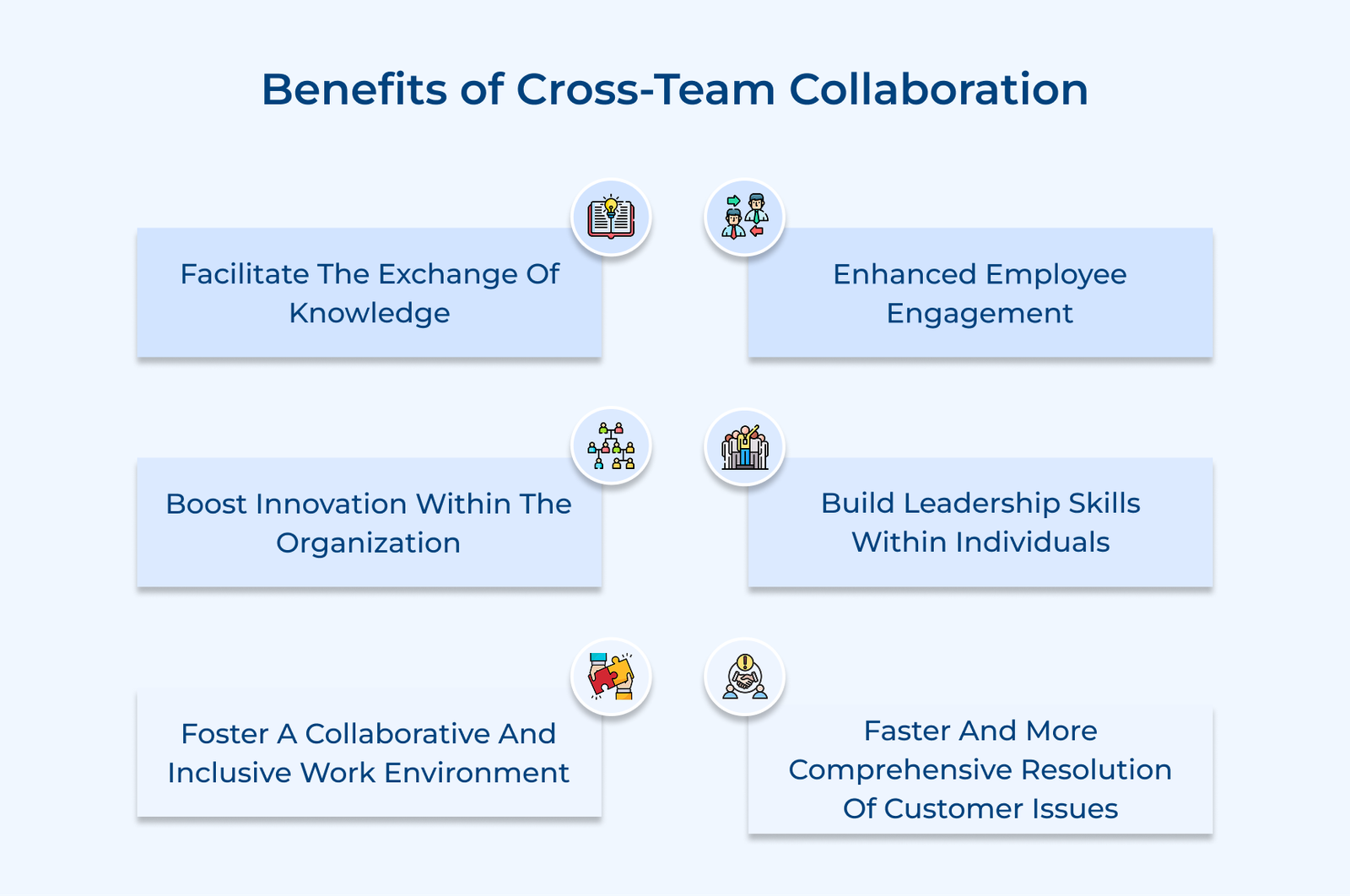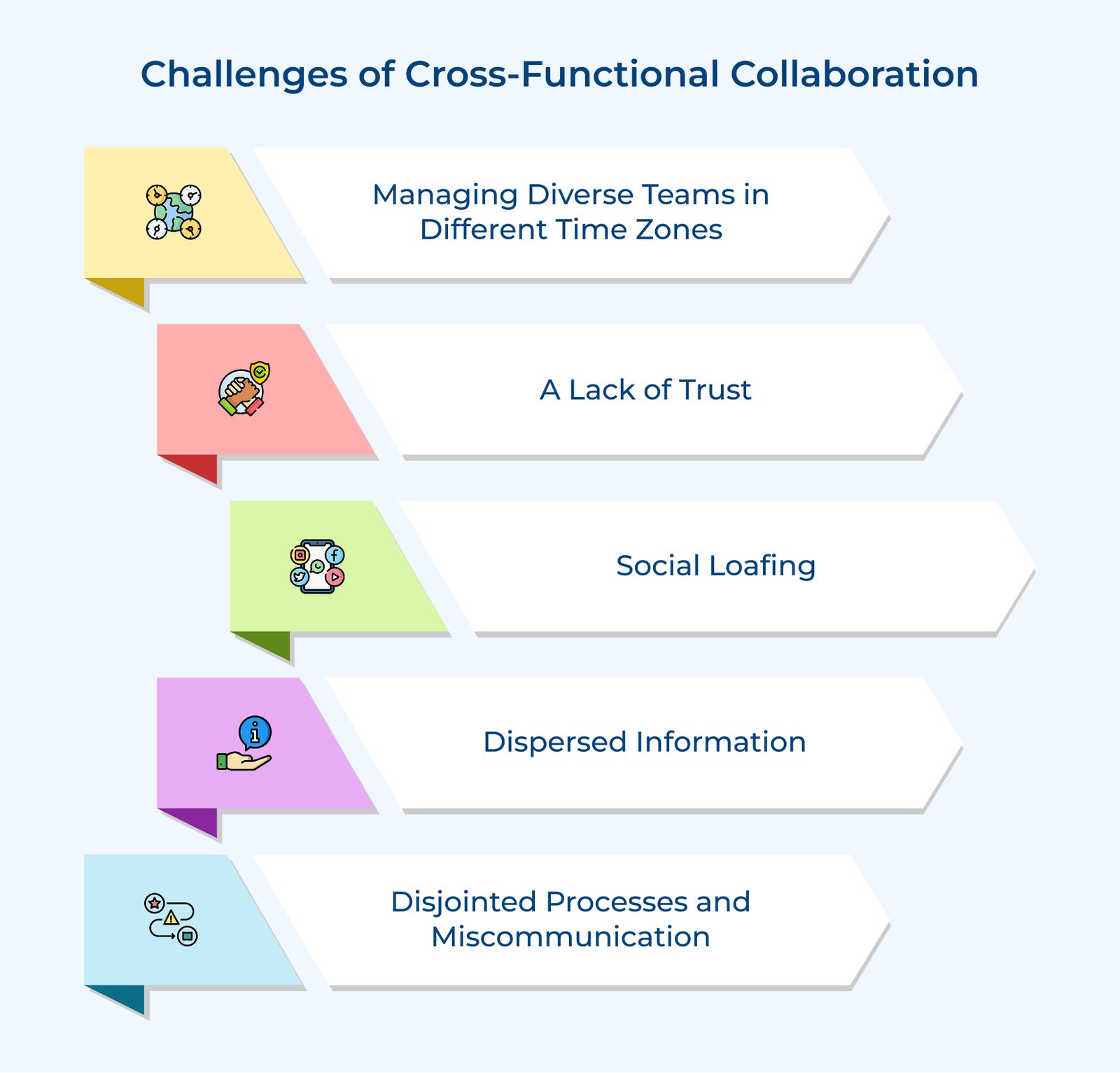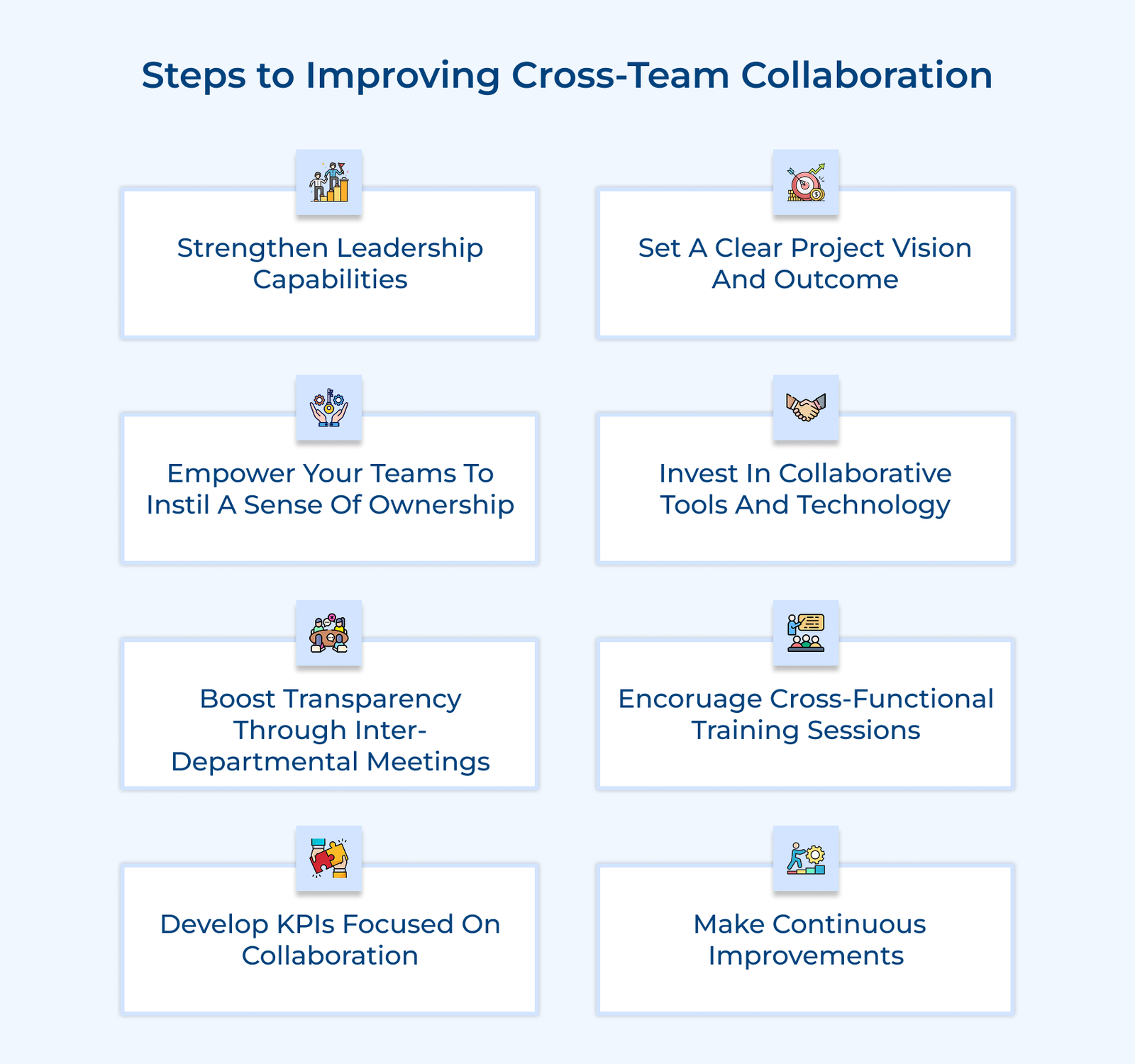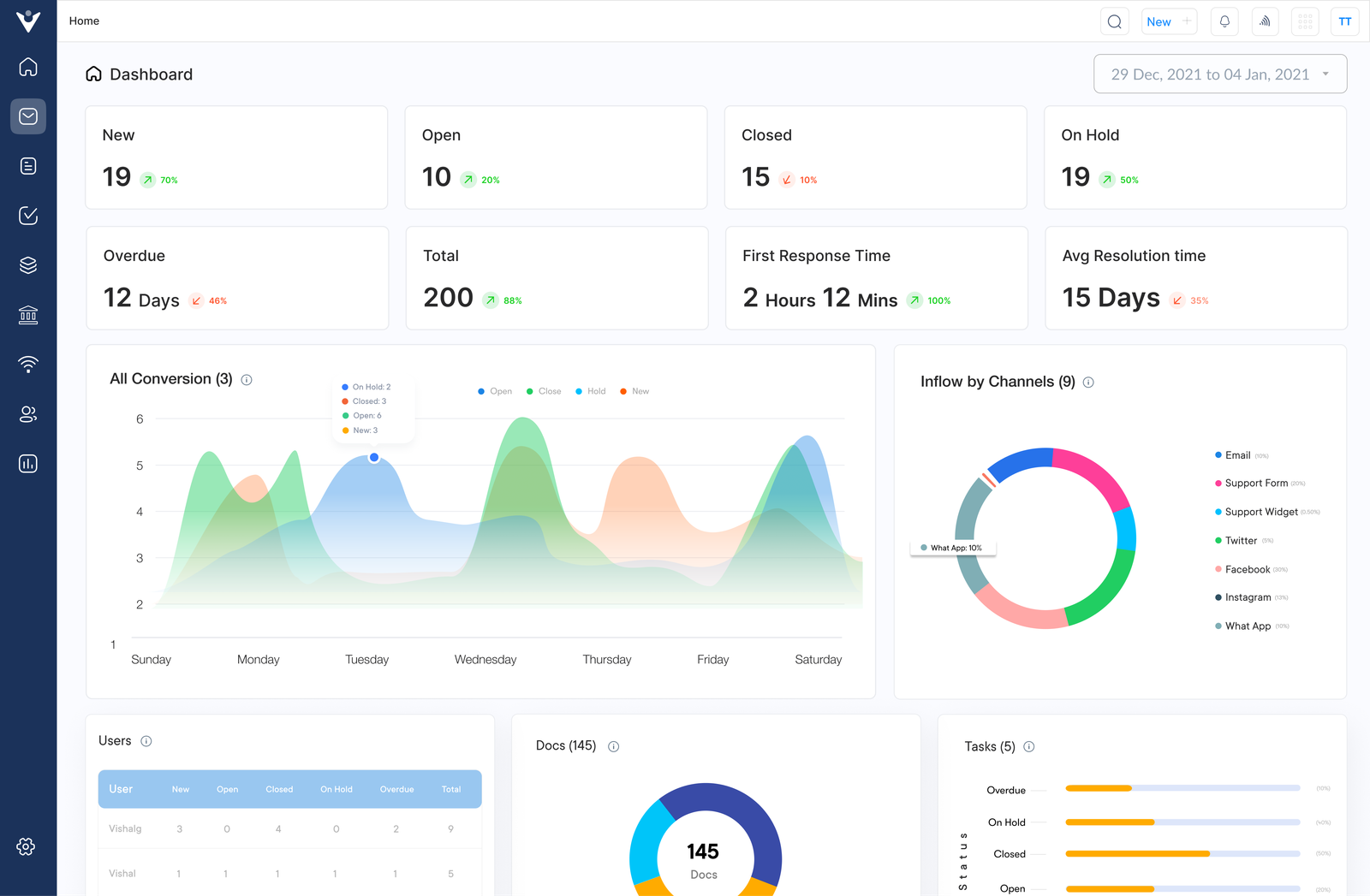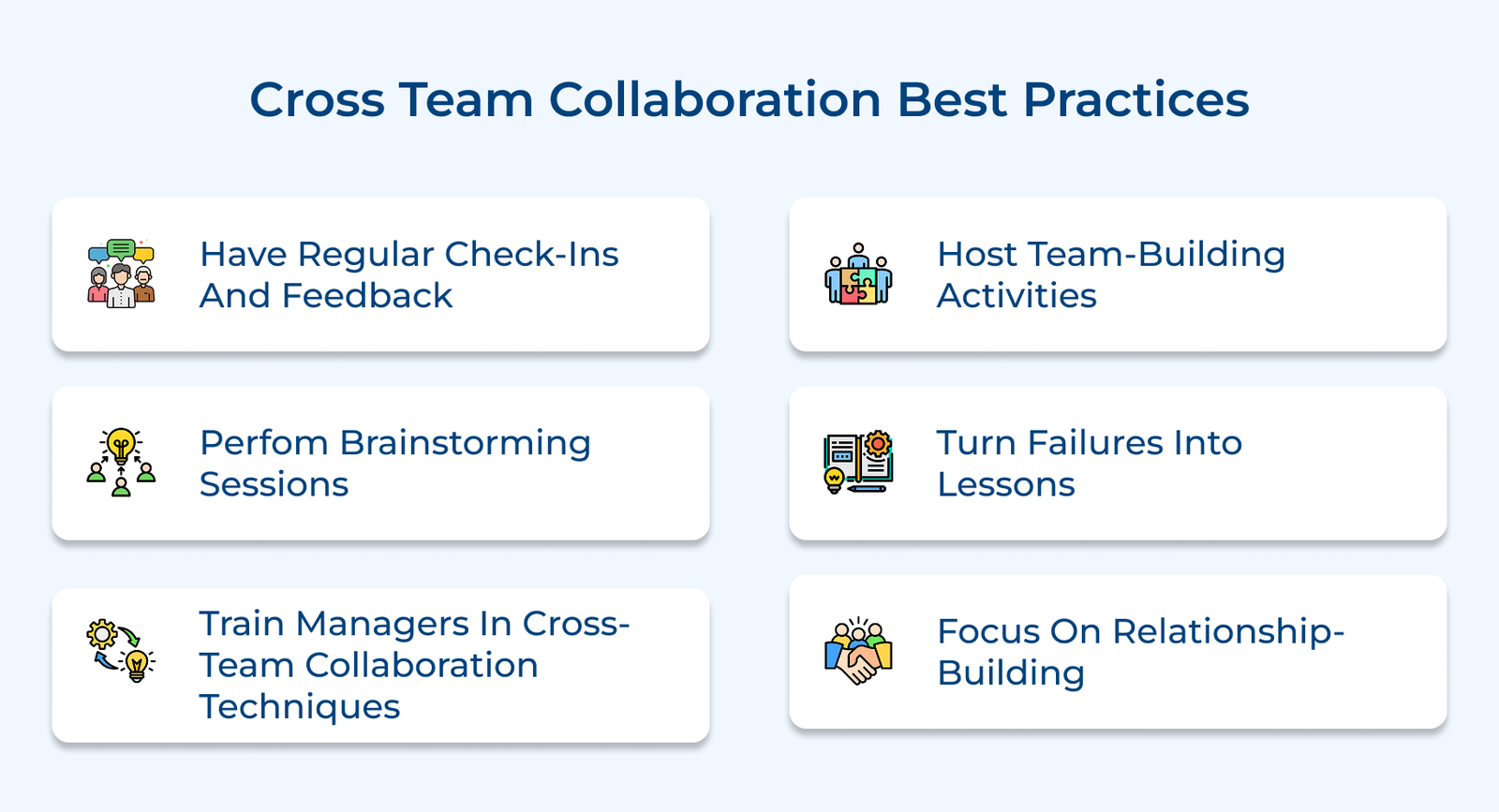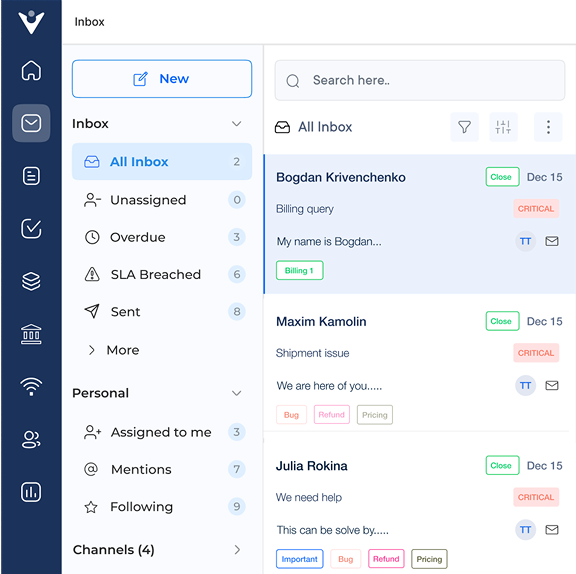1. Establish Clear Common Goals
Setting clear, shared goals is essential for effective cross-team collaboration. Start by defining overarching objectives that align with the company’s vision and ensure they are SMART: specific, measurable, achievable, relevant and time-bound.
Once established, every team must understand how their contributions impact the goals. The clarity enhances a sense of purpose and unity, creating a collaborative environment where all departments work together toward a common outcome.
Pro tips:
- Host a company-wide goal-setting workshop to unite departments around shared objectives.
- Design a visual roadmap showcasing how each team’s contributions drive overall goals.
- Consistently review and share goals in cross-team meetings to keep everyone focused
2. Implement Effective Communication Channels
Establishing effective communication channels is vital for seamless cross-team collaboration. Selecting the right tools—like Slack or Microsoft Teams—can enhance real-time communication and file sharing, bridging departmental gaps.
Regular cross-team meetings are equally important. The sessions allow teams to share updates, tackle challenges and align their efforts. Promoting open and transparent communication enhances trust, ensuring everyone feels comfortable sharing ideas.
Pro tips:
- Create dedicated cross-functional communication channels for each key project or initiative.
- Host a weekly “cross-pollination” meeting for teams to share progress and tackle challenges together.
- Create a communication guide that outlines best practices for using various channels effectively.
3. Define Roles and Responsibilities
Clearly defining roles and responsibilities is essential to prevent confusion in cross-team collaborations. Outline each team’s and individual’s specific tasks to ensure everyone knows their contributions.
Identifying areas for overlap and potential collaboration is equally crucial, as it highlights opportunities for synergy. Establish accountability measures to ensure all team members own their tasks, driving the project’s success.
Actionable tips:
- Create a RACI (Responsible, Accountable, Consulted, Informed) matrix for each cross-team project.
- Hold regular role-clarity workshops to tackle ambiguities and adapt to any changes in responsibilities.
- Use a shared project management tool to make tasks and ownership transparent across all teams.
4. Facilitate a Culture of Trust and Respect
Building a culture of trust and respect is essential for effective cross-team collaboration. Encourage team-building activities to break down barriers and create personal connections across departments.
Enhancing empathy is key—educate team members about the challenges and priorities of other teams to promote mutual respect. Celebrate cross-team successes to reinforce collaboration’s value and inspire ongoing teamwork.
Pro tips:
- Host monthly social events or team-building activities to strengthen bonds across departments.
- Launch a “Day in the Life” program for employees to shadow colleagues from different teams.
- Establish a recognition program that celebrates and rewards successful cross-team collaborations.
5. Standardize Processes and Workflows
Standardizing processes and workflows is crucial for effective cross-team collaboration. It means establishing common project management methodologies that all teams can adopt, ensuring a consistent approach across the organization.
Equally important is developing unified documentation practices. Teams can easily comprehend each other’s work by standardizing how information is recorded, stored and shared. Consistent reporting or feedback mechanisms also help keep everyone aligned on progress, challenges and outcomes.
Actionable tips:
- Create a cross-functional process map to clearly outline standard workflows for collaborative projects.
- Create templates for common documents (e.g., project briefs, status reports) used across teams.
- Adopt a centralized project management tool that features standardized reporting for seamless collaboration.
6. Provide Cross-Functional Training
Cross-functional training is a powerful way to boost collaboration by expanding team members’ skills and perspectives. Employees gain insights into the challenges faced by other departments by providing opportunities for skill development in various areas, enhancing empathy.
Implementing job shadowing or rotation programs provides hands-on experience that deepens understanding and strengthens connections. Knowledge-sharing sessions let experts exchange insights, enhancing a culture of continuous learning and mutual respect.
Actionable tips:
- Host a quarterly “Skill Share” week where teams hold mini-workshops to showcase their expertise.
- Establish a mentorship program that pairs employees from diverse departments to enhance collaboration
- Create a dynamic cross-functional training curriculum that highlights essential skills from each department to enhance collaboration.
7. Leverage Technology for Collaboration
Harnessing technology is key to effective cross-team collaboration. Implementing project management creates a centralized hub for teams to coordinate efforts, share updates and track progress.
Utilizing shared databases or knowledge management systems ensures everyone has access to vital information, minimizing miscommunication and redundancy. Providing training on the tools and establishing clear usage guidelines empowers teams to maximize their effectiveness.
Actionable tips:
- Perform a technology audit to pinpoint gaps in collaborative tools and implement effective solutions.
- Create a centralized digital hub for all cross-team projects and resources.
- Host regular training sessions on collaboration tools to empower all team members to use them effectively.
8. Measure and Evaluate Collaboration Efforts
Measuring and evaluating collaboration is essential for continuous improvement. Establishing key performance indicators (KPIs) for cross-team projects helps track metrics like project completion times, output quality and employee satisfaction.
Regular assessments enable organizations to pinpoint successes and areas for enhancement, while feedback from team members offers invaluable insights into the challenges of collaboration, guiding future strategies.
Actionable tips:
- Create a balanced scorecard tailored to assess the effectiveness of cross-team collaboration.
- Hold quarterly surveys to collect team feedback on collaboration processes and results.
- Create a system to track and analyze how cross-team projects influence overall business goals.
Tools to Use for Better Cross-Team Collaboration
We will explore essential tools that can elevate teamwork and pave the way for better results across your organization.
1. Veemo Support






